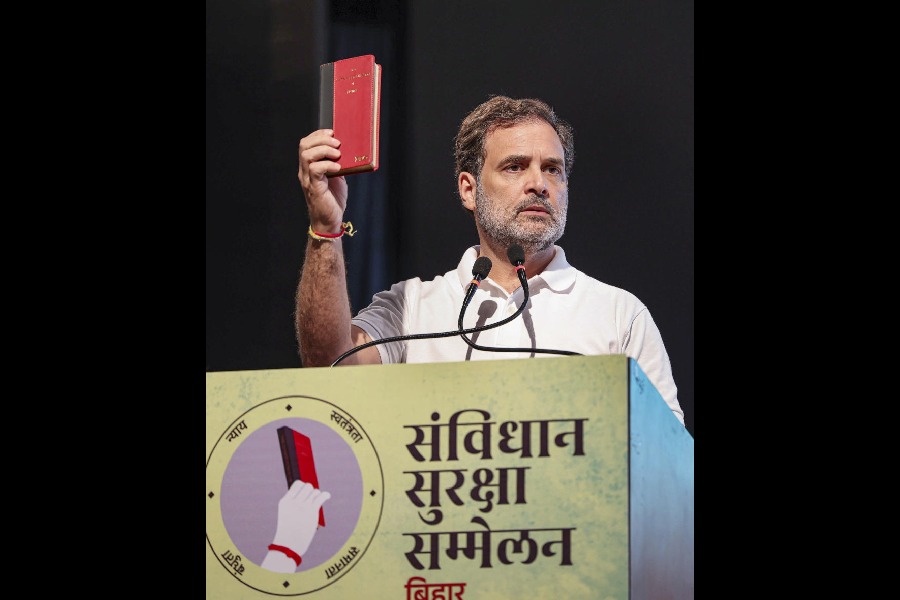The road to fast economic growth is littered with the wreckage of development models that were once all the rage. In the midst of the Great Recession in the Thirties, which traumatized all capitalist economies, the widely advertised success of the first two Soviet five-year plans invested centralized planning with a halo in the minds of radical intelligentsia everywhere. In the Sixties, this model lost some of its sheen with the startling growth registered in most Western societies and the emergence of the welfare state.
By the early Seventies, Japan — with its exacting work ethic and social discipline, managerial skills and knack of using imported technologies to manufacture products, which were both cheaper and better designed — took the lead in sustaining exceptionally high growth-rates and became a new economic superpower. Yet, only a few in east Asia could repeat its experience and by the mid-Nineties its own economy was in serious trouble.
In China, by the late Seventies, the leaders denounced during the Cultural Revolution as capitalist-roaders embarked on a project to make a transition by degrees from a moribund command economy to one dominated by private enterprise. The country, under the new dispensation, was able to keep up high growth-rates for nearly two decades though estimates of the average annual increase in the gross domestic product ranged from 7 to 10 per cent. This was the first instance of a socialist economy gradually changing over to a market system under communist auspices. Few countries in eastern Europe, under tight Soviet control, were allowed to embark on so blatant an un-Marxist venture until 1989 when they were liberated.
As ill luck would have it, the transition to a market economy for most republics of the defunct Soviet Union as well as east European countries has been far more painful than any of them bargained for. Russia’s experience has been most tragic, with its social fabric in tatters, its already modest GDP reduced to a third of what it was when it embarked on the new course a decade earlier, some of its richest sources of national wealth misappropriated by a clutch of former managers who became billionaires overnight, newly formed mafia gangs extorting protection money from trade and industry, and one-third of its population pushed below the poverty-line, fixed at a measly daily income of two roubles.
Why did Russia make such a hash of its changeover to a more liberal economic order? In his new book, Globalisation and Its Discontents, Joseph E. Stiglitz, last year’s winner of the Nobel prize for economics, blames its plight on the wrong advice tendered to it by the spin-doctors of the International Monetary Fund. That does not, however, absolve the corrupt Boris Yeltsin regime of readily accepting the prescriptions of the shock therapist before the institutions and the regulatory authorities needed to underpin the smooth functioning of a market economy.
Stiglitz cites a picture taken at the outset of the Indonesian crisis, which threatened to throw its economy into chaos, in which a surly and stern Michel Camdessus, then managing director of the IMF, glowers at the broken-down Mohammad Suharto, president of the republic in distress. This image, projected on the screen by many international television channels, etched itself on the minds of many viewers as symbolizing the arrogance of those to whom a country in deep trouble goes for a bail-out.
As Stiglitz himself is at pains to explain, the bail-out is seldom a disinterested affair. The big bail-outs are designed as much to rescue the creditor banks in the G-7 nations as the states unable to repay their old debts. Stiglitz writes as an insider, having done stints as economic advisor and as chief economist at the World Bank. There is undoubtedly an element of bullying by the IMF as it presents a standard policy package to a country in crisis which requires it to devalue its currency, open its markets to imports of foreign goods, introduce tighter fiscal controls including cuts in food and other subsidies, and going for convertibility on both current and capital accounts.
Whatever the IMF’s imperatives, in which the interests of the G-7 often supercede those supposed to be receiving emergency aid, there is always enough room for manoeuvre even for a country in dire straits to spread the reform process over a long period, and sequence the changes in such a way as will not disrupt its economy. For societies in transition to a market economy, the first priority is to set up an institutional framework comprising a legal system, which protects property rights and penalizes those who steal public assets. They have also to set up regulatory bodies to ensure the proper functioning of financial institutions and stock exchanges. Even if the United States of America had some design to eviscerate Russia, the kind of crony-mafia capitalism that evolved in his own country was entirely Yeltsin’s doing. His own cabinet carried many of the nouveau riche on board.
How is it that Poland, Hungary and Slovenia were able to sequence the standard adjustments with greater acumen? They fared better because the main challenge for their leaders was to create more jobs in the economy. Dealing with the inflation could wait. Yeltsin went the whole hog with the shock therapists in trying to implement the entire reform package at one go. It was an invitation to disaster with no end to shocks and no sign of any therapy. Even the 20-billion-dollar bailout by the IMF in 1998 failed to buck the trend. Stiglitz’s own guess is that it will take Russia another decade to go back to the point it started from in 1989.
Though convinced of the need for liberalization to get out of the deadend of a stagnant and low-wage economy with too many loss-making plants to care for, the Chinese understood much better the dynamics of a market economy as well as the dangers implicit in going too fast. It is the result of this due caution that they fared so much better. Some of the gains are all too visible. The city centres have a new and more prosperous look. The villagers have more money in their hands. The country has a fast-growing middle-class and has been earning huge trade surpluses as well as attracting foreign investment on a staggering scale.
Yet, China is still poor, with a per capita income just 80 per cent higher than India’s. Even Stiglitz, who is quite euphoric about the country’s achievements, admits ruefully that the new prosperity itself has created challenges to which the country has yet to find adequate answers. The continuing suppression of every voice of dissent is a sign of the leadership’s painful awareness of the vast potential of political and social unrest in the wide disparities of income and wealth the reforms have created between the countryside and the urban areas, manager and employees at the lower rungs and the coastal areas and the north-western pro- vinces. Millions of migrant labourers trudge from town to town in search of better life-chances. Behind the thousand skyscrapers in Shanghai stretch the low recessive dormitories of workers, with a score of them often huddled in one of these.
This is not to belittle China’s success story. It is merely to point to the dismal truth of the social costs of the reforms in terms of loss of the old ethic of a more equitable income distribution. Prem Shankar Jha, in Perilous Road to the Market — a well-researched book in which he compares the experience with reforms of Russia, China and India — cites one figure to show how far the post-reform era has drifted from the pre-reform period. Under the old dispensation, the salary of the manager of an industrial unit was fixed at 5 times that of the lowest paid worker. The current level is 300 times as high.
Maybe wider wealth and income disparities are an integral part of a system based on money incentives for both skilled labour and managerial and entrepreneurial talent. The immense gains registered by advanced capitalist societies, the system over which they preside, has not been able yet to insure against the risk of periodical ups and downs, booms and busts. Japan has yet to get out of its prolonged stagnation after years of exertion. There are signs that the current recession in the US is likely to deepen. India’s reform process has come to a grinding halt. And there is clinching evidence to show that it may not be long before a cloud of recession also darkens the Chinese economic landscape.










